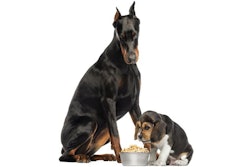
Several trends may rise to prominence internationally in 2020, including those focused on M&A activity, clean label and food safety. | (MarsYu I iStock.com)
In conjunction with Petfood Industry’s annual industry trends feature, we asked for an overview of the international pet food market outlook in 2020. Here’s what Marcel Blok, owner of Change Stranamics BV, an internationally oriented consulting company for the pet industry, had to say:
- In certain parts of the world — certainly in Western Europe — the mergers & acquisitions activity will further increase, partly because of further concentration on the retail side which has become too challenging for some. A new round of investments in non-productive assets (mostly environment related) will be another reason to throw in the towel. Furthermore, owners of family-owned companies will want to cash in while the going is still good.
- In quasi-saturated regions such as North America and Western Europe, the effects of so-called premiumization will further diminish. The retail trade more and more applies this concept for the development of their own private label ranges, and as a consequence the overall value of “premium” products will show a downward trend.
- A still fairly recent contributor to growth (a higher per ton value) — grain free — will decline in share of market, mainly because the industry has succeeded in confusing its customers to such an extent that a growing number of grain-free disciples are already re-graining. This trend will most likely continue.
- The consequences of the Paris Climate Agreement are being felt already, perhaps even beyond Europe. Intensive farming is under pressure, as is animal welfare. Levies on the use of energy for food production (and this would include pet food) are already being discussed at a high level. Not only an increase in cost (albeit not significant) must be foreseen, but the research into using waste for pet food (that’s how the industry started anyway) will very likely intensify significantly.
- In line with this development we will see a rapidly growing demand for plant-based pet food, following the very tangible and noticeable trend in human food. For sustainability and animal welfare reasons (and a few more) the use of insect protein in pet food will gain further acceptance in most regions of the world.
- Because our industry has gradually started to become aware that we are dealing with an increasingly emancipated, informed and connected consumer who doesn’t just take things for granted anymore, clean label — and to an extent limited-ingredient diets (LID) — will be focal points in product development and communication … despite the fact that there still is no agreement about what “clean label” actually stands for.
- “Carbon footprint” will become more holistic, because it doesn’t only deal with process, but increasingly also with ingredients and distribution. The whole chain between field and fork (or in our case bowl) is under scrutiny, and the changes this invokes will be structural.
- There are signs that in some parts of the world, ingredients that meet the standards for pet food are becoming scarce or more difficult to procure. This will lead to companies having to make do with sub-standard alternatives and maybe sub-optimal processing. Therefore, food safety challenges are likely to intensify despite the food safety initiatives already taken.
- The quest for so-called novel ingredients is likely to continue, but not to intensify; in contrast with this trend there will be clearer signs of procuring locally. Exotic will have lost its shine, because it very often is in conflict with other trends such as carbon footprint awareness and to an extent sustainability in general.
- Online sales of pet food will continue to grow significantly around the world, with a growing impact of online-exclusive brands and product propositions. The latter development is likely to be more fueled by the online operators than by the pet food manufactures.
Read the companion article, "Quality, sustainability to dominate 2020 pet food trends,” published in the January 2020 issue of Petfood Industry magazine.
















